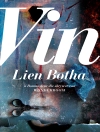Mobile Museums presents an argument for the importance of circulation in the study of museum collections, past and present. It brings together an impressive array of international scholars and curators from a wide variety of disciplines – including the history of science, museum anthropology and postcolonial history – to consider the mobility of collections. The book combines historical perspectives on the circulation of museum objects in the past with contemporary accounts of their re-mobilisation, notably in the context of Indigenous community engagement. Contributors seek to explore processes of circulation historically in order to re-examine, inform and unsettle common assumptions about the way museum collections have evolved over time and through space.
By foregrounding questions of circulation, the chapters in Mobile Museums collectively represent a fundamental shift in the understanding of the history and future uses of museum collections. The book addresses a variety of different types of collection, including the botanical, the ethnographic, the economic and the archaeological. Its perspective is truly global, with case studies drawn from South America, West Africa, Oceania, Australia, the United States, Europe and the UK. Mobile Museums helps us to understand why the mobility of museum collections was a fundamental aspect of their history and why it continues to matter today.
Praise for Mobile Museums
‘A rich and fascinating picture of the circulation of collections through time in a style accessible to a broader scientific audience. The message of the value of researching mobility and putting it to valuable purpose is clear and provides much food for thought.’
Archives of Natural History
‘A generously varied and purposeful testament to the importance of conversations between disciplines, institutions and cultures.’ Journal of the History of Collections
‘This book advances a paradigm shift in studies of museums and collections. A distinguished group of contributors reveal that collections are not dead assemblages. The nineteenth and twentieth centuries were marked by vigorous international traffic in ethnography and natural history specimens that tell us much about colonialism, travel and the history of knowledge – and have implications for the remobilisation of museums in the future.’
Nicholas Thomas, University of Cambridge
‘The first major work to examine the implications and consequences of the migration of materials from one scientific or cultural milieu to another, it highlights the need for a more nuanced understanding of collections and offers insights into their potential for future re-mobilisation.’
Arthur Mac Gregor
‘In light of [the] broad disciplinary scope and attention to diverse collections—as well as its theoretical attention to circulation beyond individual objects—Mobile Museums will be of use to anyone who needs to follow a collection on the move.’
Museum Worlds
‘This edited volume opens the potential of an examination of the history of scientific knowledge that goes beyond circulation and shifts to the milieu-dependent values of the “mobility turn.”’
Nuncius
Tabla de materias
List of figures
List of tables
List of contributors
Acknowledgements
Introduction: mobilising and re-mobilising collections
Felix Driver, Mark Nesbitt and Caroline Cornish
1 Plant artefacts then and now: reconnecting biocultural collections in Amazonia
Luciana Martins
2 Re-mobilising colonial collections in decolonial times: exploring the latent possibilities of N. W. Thomas’ West African collections
Paul Basu
3 Circuits of accumulation and loss: intersecting natural histories of the 1928 USDA New Guinea Sugarcane Expedition’s collections
Joshua A. Bell
4 Kew’s mobile museum: economic botany in circulation
Caroline Cornish, Felix Driver and Mark Nesbitt
5 Illustrating anthropological knowledge: texts, images and duplicate specimens at the Smithsonian Institution and Pitt Rivers Museum
Catherine A. Nichols
6 Expeditionary collections: Haslar Hospital Museum and the circulation of public knowledge, 1815-1855
Daniel Simpson
7 Mobile botany: education, horticulture and commerce in New York botanical gardens, 1890s-1930s
Sally Gregory Kohlstedt
8 Plants on the move: Kew Gardens and the London schoolroom
Laura Newman
9 Circulations of paradise (or, how to use a specimen to best personal advantage)
Jude Philp
10 Circulation as negotiation and loss: Egyptian antiquities from British excavations, 1880–present
Alice Stevenson
11 Colonising memory: Indigenous heritage and community engagement
Claudia Augustat
12 The flow of things: mobilising museum collections of nineteenth-century Fijian liku (fibre skirts) and veiqia (female tattooing) Karen Jacobs
Afterword: What goes around, comes around: mobility’s modernity
Martha Fleming
Index
Sobre el autor
Caroline Cornish is Senior Research Officer (Plant Humanities) at Royal Holloway, University of London and Honorary Research Associate at the Royal Botanic Gardens, Kew. She has published widely on the history of Kew’s Museum of Economic Botany and her research interests lie at the intersection of histories of museums, collections and science.












